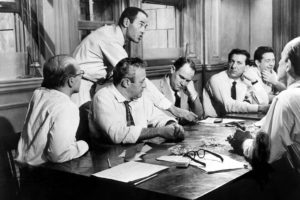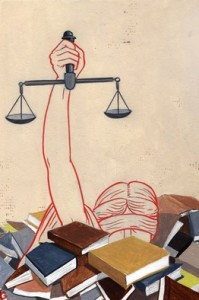The 100th anniversary of Prohibition is a reminder of how hard it is to regulate consumption and display
The Wall Street Journal, January 24, 2019

ILLUSTRATION: THOMAS FUCHS
This month we mark the centennial of the ratification of the Constitution’s 18th Amendment, better known as Prohibition. But the temperance movement was active for over a half-century before winning its great prize. As the novelist Anthony Trollope discovered to his regret while touring North America in 1861-2, Maine had been dry for a decade. The convivial Englishman condemned the ban: “This law, like all sumptuary laws, must fail,” he wrote.
Sumptuary laws had largely fallen into disuse by the 19th century, but they were once a near-universal tool, used in the East and West alike to control economies and preserve social hierarchies. A sumptuary law is a rule that regulates consumption in its broadest sense, from what a person may eat and drink to what they may own, wear or display. The oldest known example, the Locrian Law Code devised by the seventh century B.C. Greek law giver Zaleucus, banned all citizens of Locri (except prostitutes) from ostentatious displays of gold jewelry.
Sumptuary laws were often political weapons disguised as moral pieties, aimed at less powerful groups, particularly women. In 215 B.C., at the height of the Second Punic War, the Roman Senate passed the Lex Oppia, which (among other restrictions) banned women from owning more than a half ounce of gold. Ostensibly a wartime austerity measure, 20 years later the law appeared so ridiculous as to be unenforceable. But during debate on its repeal in 195 B.C., Cato the Elder, its strongest defender, inadvertently revealed the Lex Oppia’s true purpose: “What [these women] want is complete freedom…. Once they have achieved equality, they will be your masters.”
Cato’s message about preserving social hierarchy echoed down the centuries. As trade and economic stability returned to Europe during the High Middle Ages (1000-1300), so did the use of sumptuary laws to keep the new merchant elites in their place. By the 16th century, sumptuary laws in Europe had extended from clothing to almost every aspect of daily life. The more they were circumvented, the more specific such laws became. An edict issued by King Henry VIII of England in 1517, for example, dictated the maximum number of dishes allowed at a meal: nine for a cardinal, seven for the aristocracy and three for the gentry.
The rise of modern capitalism ultimately made sumptuary laws obsolete. Trade turned once-scarce luxuries into mass commodities that simply couldn’t be controlled. Adam Smith’s “The Wealth of Nations” (1776) confirmed what had been obvious for over a century: Consumption and liberty go hand in hand. “It is the highest impertinence,” he wrote, “to pretend to watch over the economy of private people…either by sumptuary laws, or by prohibiting the importation of foreign luxuries.”
Smith’s pragmatic view was echoed by President William Howard Taft. He opposed Prohibition on the grounds that it was coercive rather than consensual, arguing that “experience has shown that a law of this kind, sumptuary in its character, can only be properly enforced in districts in which a majority of the people favor the law.” Mass immigration in early 20th-century America had changed many cities into ethnic melting-pots. Taft recognized Prohibition as an attempt by nativists to impose cultural uniformity on immigrant communities whose attitudes toward alcohol were more permissive. But his warning was ignored, and the disastrous course of Prohibition was set.








